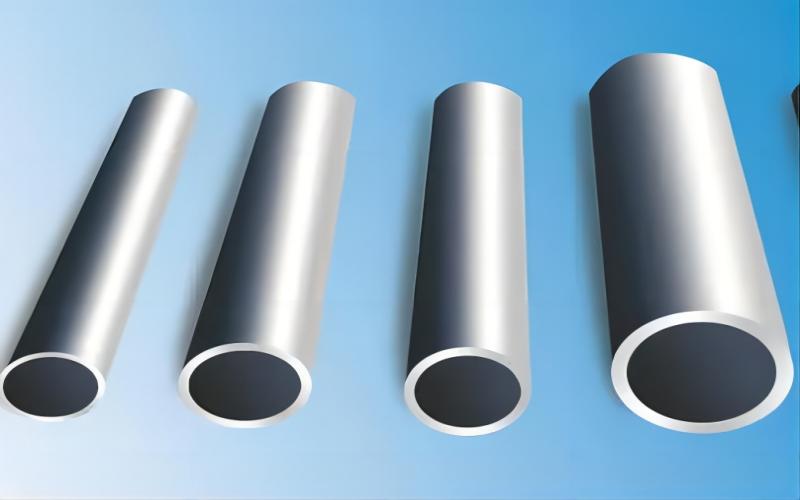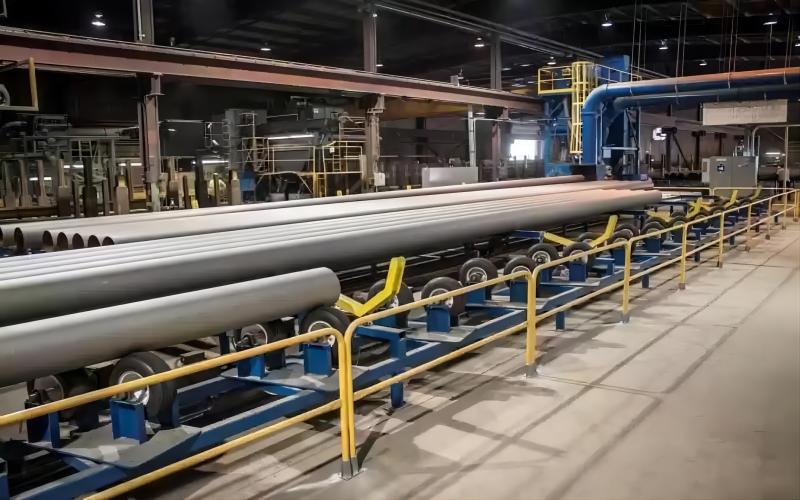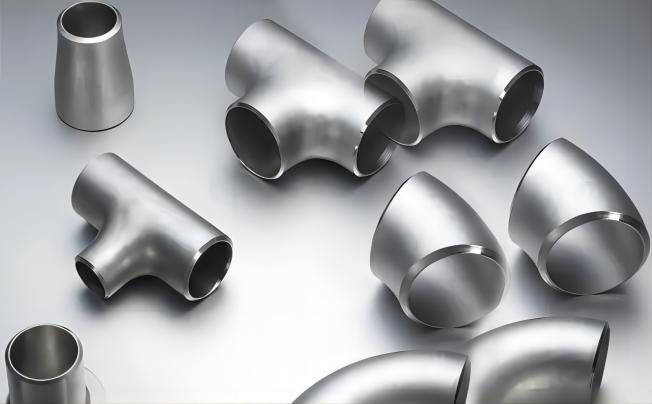Stainless steel, also known as stainless acid-resistant steel, is primarily produced in China, Indonesia, Japan, and India on a global scale. Strong domestic demand for stainless steel prevents domestic production from keeping up with the demand; to fill the gap, imports are mostly used, and stainless steel imports from Indonesia have grown dramatically in recent years. Exports have greatly expanded along with the rapid development in production and expansion of China’s stainless steel production capacity. Below, I’ll give a quick analysis of the stainless steel market.
Market Trends
1. Global Data: The market for stainless steel was estimated to be worth 19.65 billion USD in 2021 and is anticipated to reach 29.85 billion USD by 2029. The market for stainless steel in the world was estimated to be worth USD 111.44 billion in 2022, and from 2023 onward, it is anticipated to rise at a CAGR of 7.4%. From 2023, the stainless steel market is anticipated to expand at a CAGR of 7.4%.
2. According to data from the country, China produced 30.632 million tonnes of crude stainless steel in 2021, up 0.49 million tonnes from 2020 and 1.64% year over year. By the first half of February 2022, the market’s inventory of stainless steel stood at 802,300 tonnes, up 150,700 tonnes from the second half of January and up 23.13% from the previous year’s fall of 0.39%. From a statistics perspective, the increase in inventory in 2022 is more apparent, but it is far smaller than it was during the same time in 2021.
After years of development, China’s stainless steel production enterprises have blossomed all over. From the perspective of the key stainless steel enterprises, many excellent stainless steel production enterprises have risen quickly and have gradually taken the lead in the stainless steel industry.

China uses around 28% of the world’s stainless steel, making it the country with the largest use of stainless steel in the production of metal goods. The building of homes, tall buildings, and other public amenities comes in second, making up around 25% of the construction industry. A higher percentage, or about 18%, of stainless steel, was employed in the petrochemical, coal, and other large-scale resource extraction industries, as well as marine engineering and other engineering machinery fields.
The manufacturing industry accounted for a total of 75% of the demand for stainless steel, which is very different from the construction industry as the main downstream user of general steel. In addition, stainless steel is used in other forms of transportation, electrical equipment, and motor vehicles, as well as in their components, with respective shares of 11%, 11%, and 7%. The future of these two high-end stainless steel applications will steadily increase the proportion, accompanied by the military and high-end manufacturing in the product structure of the upgrade.

Market Demand and Pricing Components
1. Consumer demand in downstream sectors
Stainless steel has a sizable market demand, with applications in a variety of industries including food processing, electronics, machinery, and pharmaceuticals. High-quality goods are in high demand throughout many industries, particularly in the food, drug, and electrical sectors. Growing demand in these downstream industries supports stainless steel prices while declining demand pushes stainless steel prices lower. Due to the real estate slowdown and the turbulent events of property businesses, the downstream consumption of stainless steel has been insufficient since last year. Construction of domestic infrastructure and new infrastructure this year is anticipated to boost consumer demand for stainless steel. Demand for chemical equipment is anticipated to expand steadily, which might fuel demand for stainless steel.
Second, as people strive to live better lives and decorate their homes, there is a rising need for architectural decorating. On the other hand, the market for stainless steel has experienced fresh demand prospects as a result of the development of new technologies and applications. For instance, the growing acceptance of electric vehicles has raised the demand for stainless steel that is both light and corrosion-resistant. Additionally, new market opportunities have been opened up by the expansion of the renewable energy sector.
2. Macroeconomic situation and national policies
The primary sector of the national economy is the iron and steel sector, and when the macroeconomic environment changes, so do the prices of stainless steel. The price of stainless steel will be affected to some extent by changes in national macroeconomic policy, monetary policy, foreign exchange policy, and import and export policy. About 80% of the stainless steel export tax rebates were cancelled by China in the first half of last year, which reduced the pricing competitiveness of domestic stainless steel products and had a stronger effect on the export trade of stainless steel; In September, Taiwan’s anti-dumping tariffs and South Korea’s flat-rolled stainless steel on the Chinese mainland both increased the export costs of the relevant domestic businesses, decreasing the demand for stainless steel in international markets. The state’s steel industry control strategy, which places constraints on the manufacture of stainless steel, will also have a significant impact on the growth of the stainless steel sector.

3. Raw material cost
The primary raw materials used to make stainless steel goods are nickel and chromium. There is a significant price correlation between stainless steel product prices and raw material costs, and raw material price changes have a significant impact on product prices. Steel mills will use nickel pig iron instead of electrolytic nickel when electrolytic nickel prices are high enough to maintain a high level of operation, which reduces the demand for electrolytic nickel and pushes nickel prices downward. If the price of electrolytic nickel continues to fall below the portion of the ferronickel production cost line, this will result in a decrease in ferronickel production. and encourage the steel mills that are downstream to increase the percentage of demand for electrolytic nickel, so reducing the downward space for electrolytic nickel. Brazil, Indonesia, and the Philippines will contribute the most to the increase in nickel production in 2021, but because of the epidemic’s effects and Indonesia’s ban on mining, the supply of minerals is still limited, and the price of nickel ore as a whole is high, which raises the cost of domestic nickel pig iron. In addition, stainless steel by the raw material side of the support of the impact of growing costs is difficult to enhance due to local power limits influencing supply.
4. Technological innovation
Both the supply and demand sides of technological advancement might affect the market price of stainless steel. On the supply side, technical innovation helps to lower the price of stainless steel by enhancing the manufacturing process, raising labour productivity, and improving the production structure. From the standpoint of demand, technical advancement will enhance the functionality and performance of stainless steel products to a certain extent, expand the material’s applications, increase consumer demand for stainless steel products, and consequently raise the market price of the material.

Adjust Strategy
1. Capacity Expansion: Vendors can boost their output to keep up with the demand for stainless steel products across various industries.
2. Creation of new products: Vendors can create and innovate new goods to satisfy market demand for various features and uses. For instance, increasing the production of stainless steel items that are high-strength, corrosion-resistant, or designed for specific uses.
3. Market positioning and marketing strategies: By identifying target markets and presenting themselves appropriately, suppliers can establish effective marketing strategies. For instance, to design individualized sales and marketing programmes to entice potential clients and identify critical customers in various industries and geographical areas.

4. Supply Chain Management: To attain more competitive pricing and lead times, suppliers should manage their supply chains to increase productivity and save costs. This entails close communication with distributors and suppliers, efficient inventory control, and improved logistics and transportation.
5. Customer relationship management: To create long-lasting business relationships, suppliers should concentrate on managing their relationships with their clients. This includes delivering value-added services, attending to their requirements and concerns, and keeping in regular contact. By doing this, companies can encourage higher customer loyalty, supplier satisfaction, and commercial prospects.



